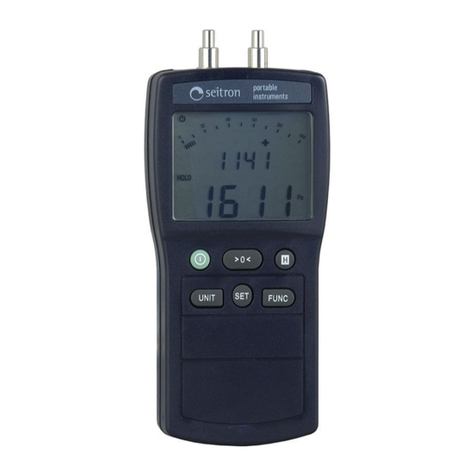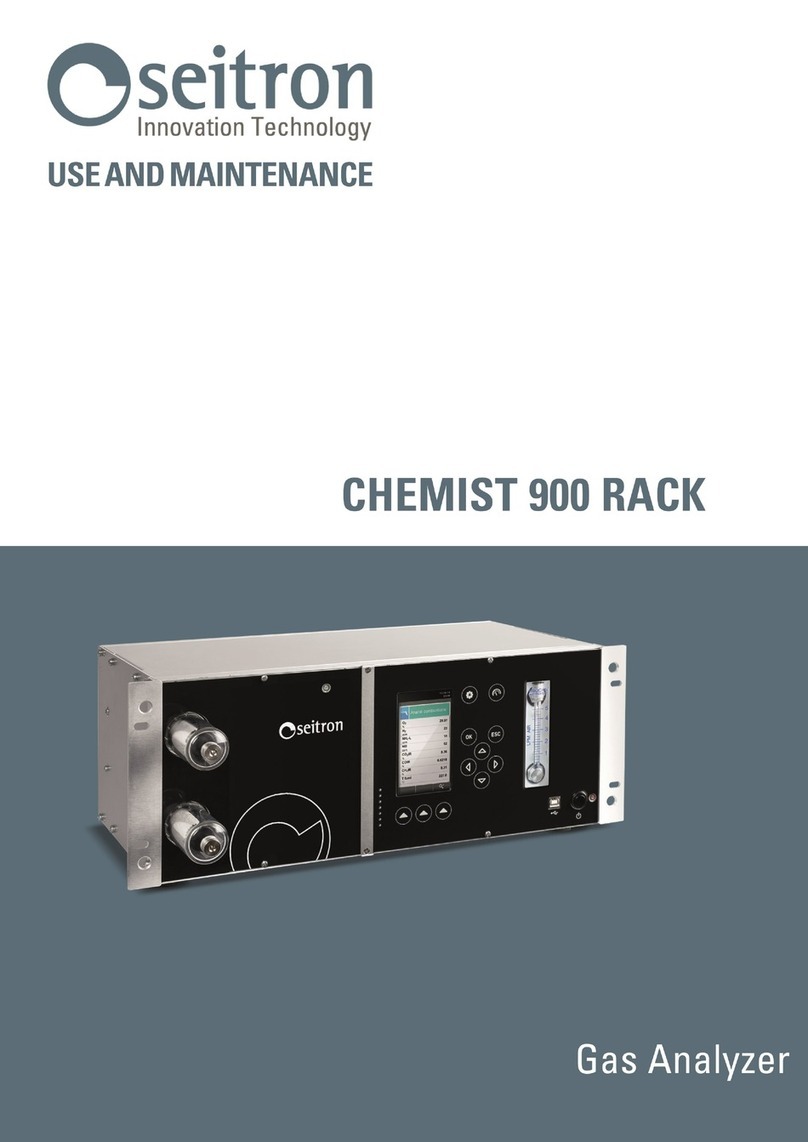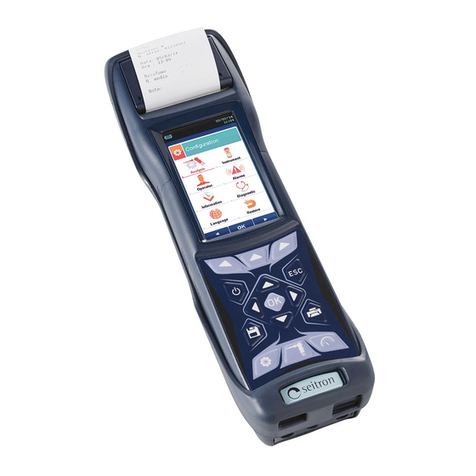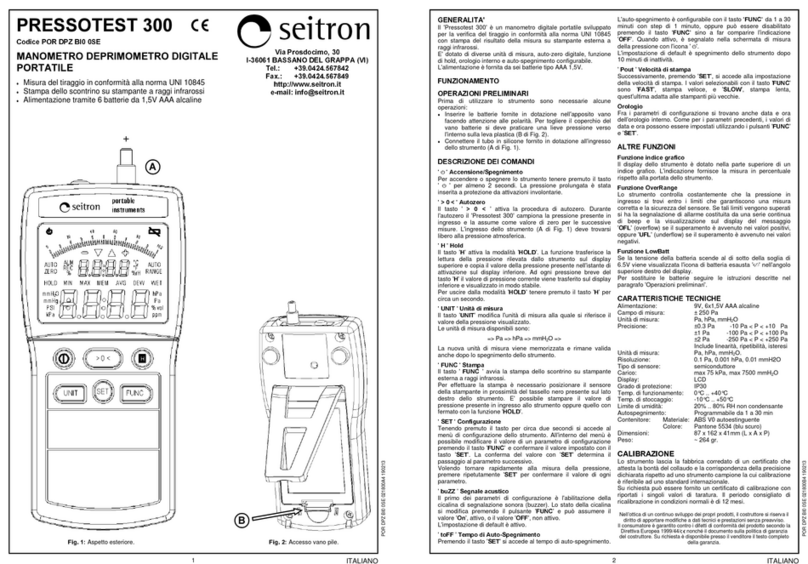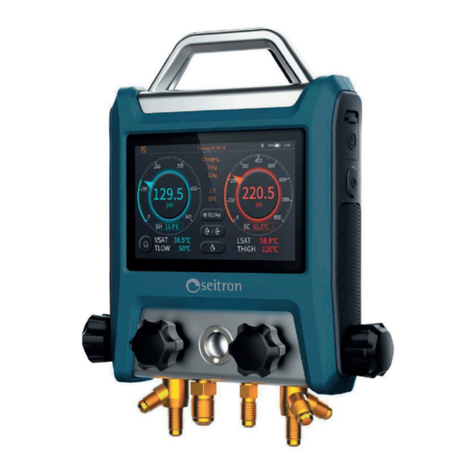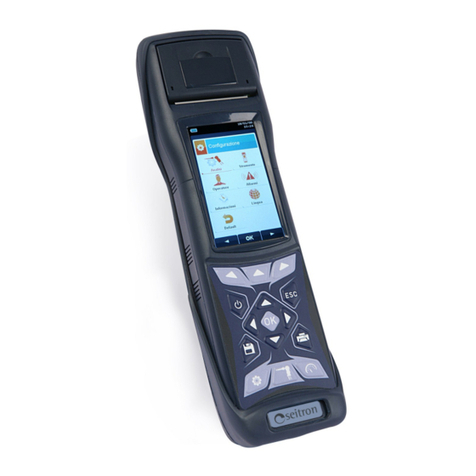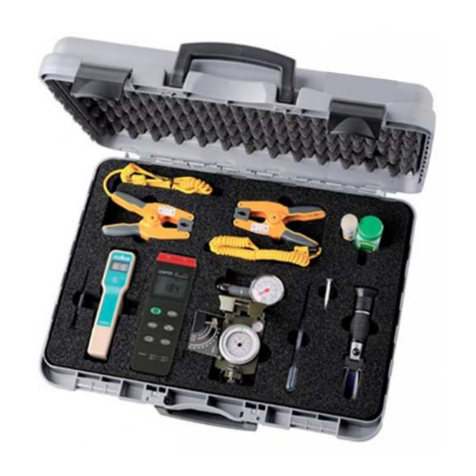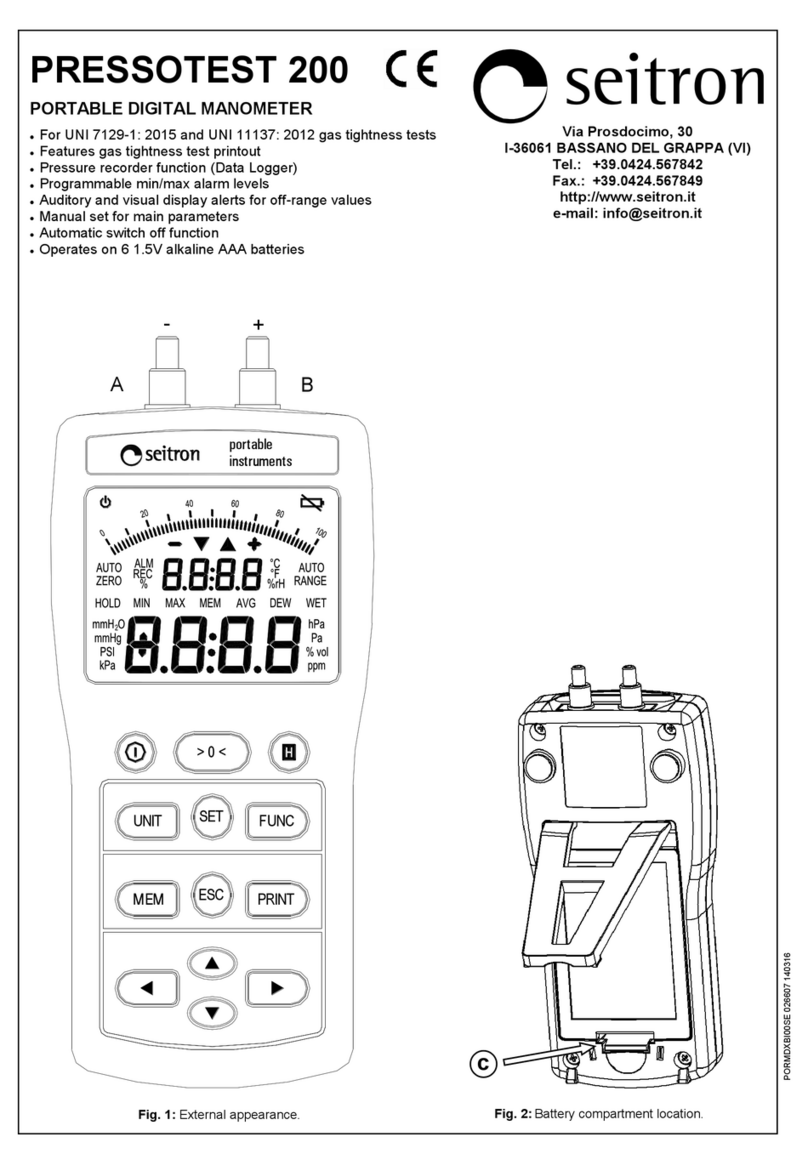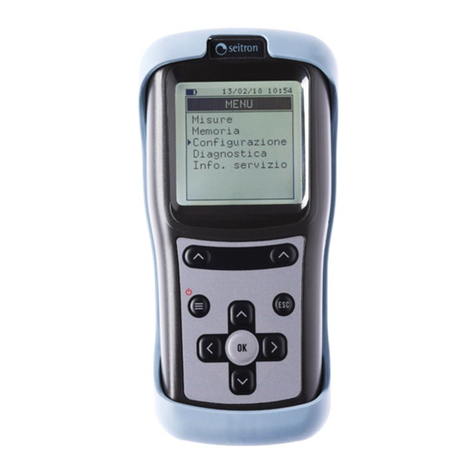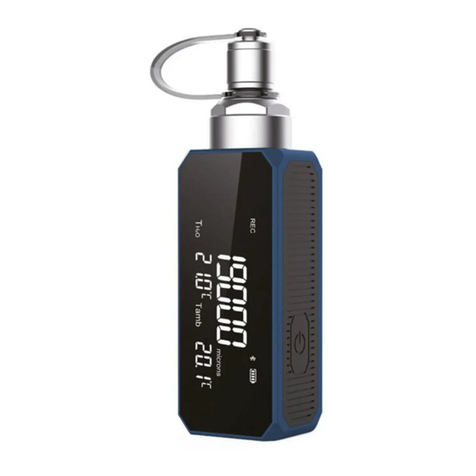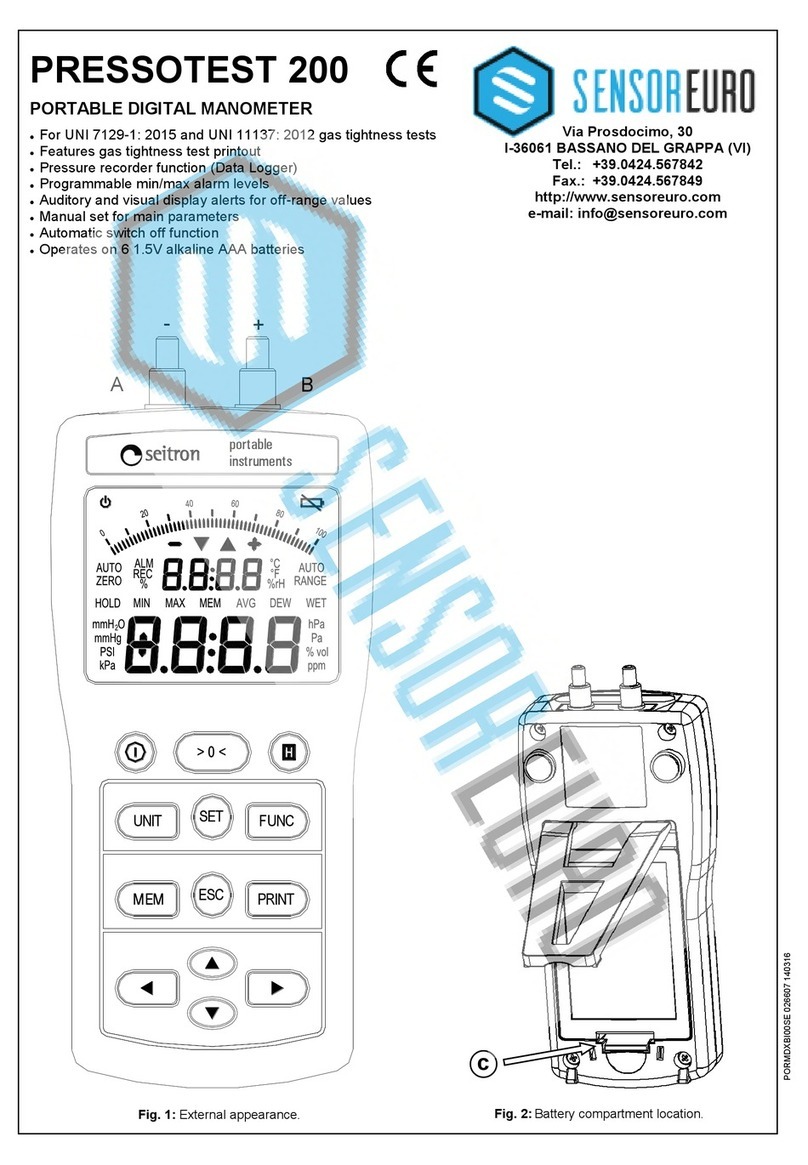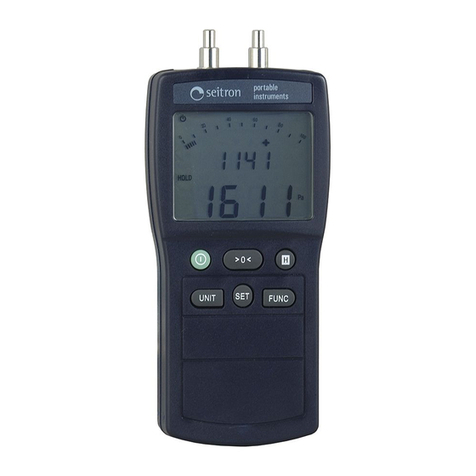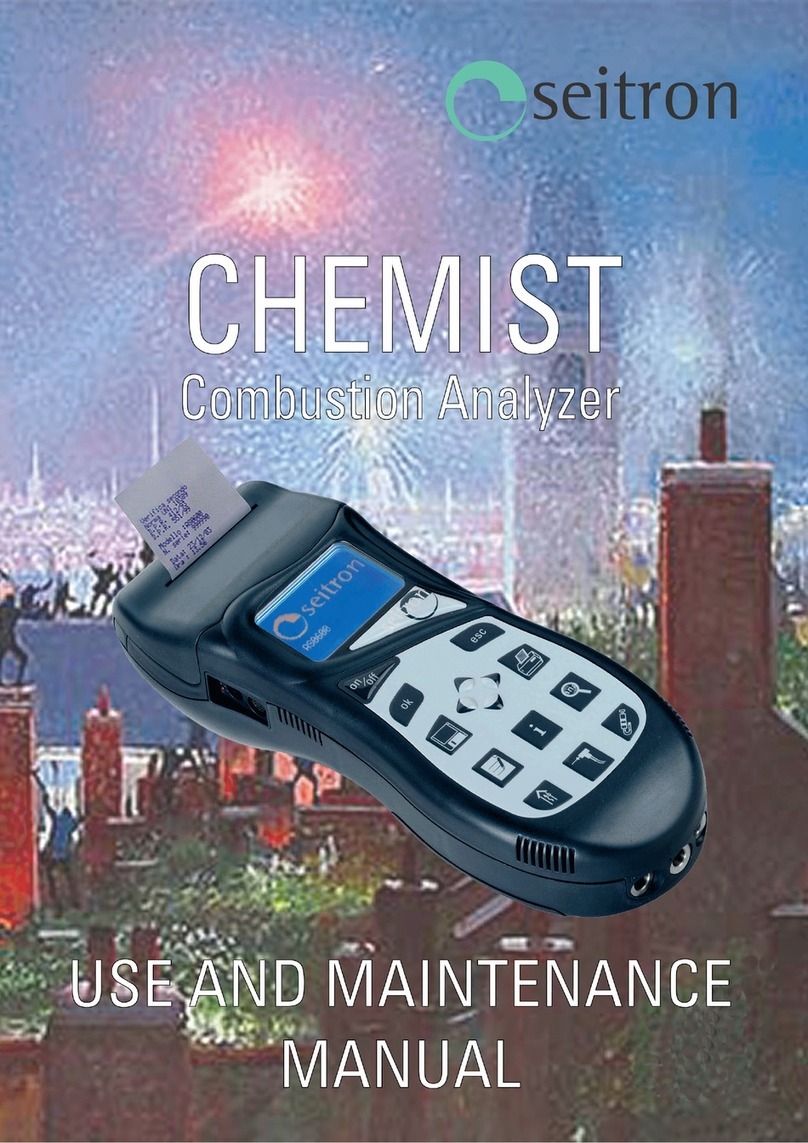
J100000000S9 037479 220721
9
4.0 PRODUCT DESCRIPTION
4.1 Working principle
The gas sample is taken in, through the flue gas probe, by a membrane pump inside the instrument.
Theprobeisfeaturedwithaslidingfitting-conethatallowstheprobeitselftobeinsertedintoholeswithadiameterfrom11mmto16mm,and
tosettheimmersiondepth:thesmokepick-uppointmustapproximatelycorrespondtothecenterofthesatck.
Thegassamplewhichmustbeanalyzedmustbetakentothemeasurementsensorsdehumidifiedandpurifiedfromsolidcombustion
residues.Inordertoachievethis,awatertrapisused,whichisatransparetplasticcylinderplacedinsidetheinstrument.
Its purpose is to decrease the speed of the air in order to precipitate the heavier dust particles and condense the vapor contained in the
combustion gases.
Alowporosityreplaceablelinefilteritisplacedonthecondensationtrapandithasthepurposeofretainingthesolidparticlesremaining
suspendedinthegases.Itisrecommendedtoreplacethefilterifitisvisiblydirty(seechapter"Maintenance").
The gas is then analyzed in its components by the installed sensors.
Theelectrochemicalsensorgrantsverypreciseresultsinatimeintervaluptoabout60minutes,timeintervalwhentheinstrument
calibration can be considered very stable. When it is necessary to perform log time measurements, it is advisable to make a new
instrument autozero by letting clean air flow inside the pneumatic circuit for three minutes. During the zero calibration phase, the
instrument sucks in clean air from the environment and detects the zero drift of the sensors (20.95% for the O2sensor),itcomparesthem
withtheprogrammedvalues,andthenproceedstotheircompensation.
During the autozero phase of the gas sensors, the zero of the pressure sensors is also performed.
Theinstrumentmustbecalibratedonceayearinalaboratoryauthorizedtoissuecalibrationcerticates.
4.2 Measurement sensors
The instrument uses pre-calibrated gas sensors.
Thesensorsdonotrequirespecialmaintenance,butmustbereplacedperiodicallywhenexhausted.
Theoxygenmeasurement(%O2)isperformedwithanelectrochemicalcellthatbehaveslikeabatterythatissubject,overtime,tolose
sensitivityduetothefactthat20.9%oxygenisalwayspresentintheair.
Toxicgasesmeasurements(CO,SO2,NO,NO2)arecarriedoutwithelectrochemicalsensorsthatarenotsubjecttonaturaldeterioration
because they are intrinsically free from oxidation processes.
Toxicgassensors,ifsubjectedtoconcentrationshigherthan50%oftheirmeasuringrangeformorethan10minutescontinuously,may
showadriftof±2%andanlongerzeroingtimes.
Inthiscase,beforeturningofftheanalyzer,itisadvisabletowaituntilthemeasuredvalueislessthan20ppmbysuckingincleanair.
Inanycase,theinstrumentprovidesacleaningcycleofthepneumaticcircuit,thedurationofwhichdependsonthesettingmadeinthe
Congurationmenu.
Thegasmustnotbeatapressurethatcandamageordestroythesensors;forthisreasonthesuctionpumpiscontinuouslyregulated,so
astoguaranteeanappropriateflowtothesensors.Themaximumallowedpressureis±40inH2O.
Equippedwithasolenoidvalveforautomaticautozero,theinstrumentperformsanautomaticcleaningcycleandturnsoffwhenthe
sensors have returned to a value close to zero.
WARNING!
Some sensors (for example NH3, H2, H2S, SO2,...) are sensible to other gases called interfering gases.
On the analysis phase, the influence of interfering gases is compensated only if on the instrument are
installed the correspondent sensors.
4.3 CO dilution (if the conguration allows it)
OneofthecharacteristicsoftheelectrochemicalsensorforthemeasurementofCOistheneedtorequireverylongself-calibrationtime
incaseithasbeenincontactwithhighgasconcentration(greaterthanthefullscale)foralongtime.
ThecombustionanalyzerisequippedwiththeCOdilutionfeatureforthesensoronposition1.TheCOsensorisprotectedbyanautomatic
dilutionsystemthatallowstoextendthemeasuringrangeofthesensorwithoutoverloadingthesensoritself.
ThedilutionsystemallowstohavetheCOsensorefcientanytimeandreadytoperformproperlyevenincaseofveryhighconcentration
of CO.
ThedilutionsystemalsoallowstoextendthemeasurementrangeoftheCOsensorasfollows:
- upto100,000ppmforaCOsensorwith8000ppmfullscale

